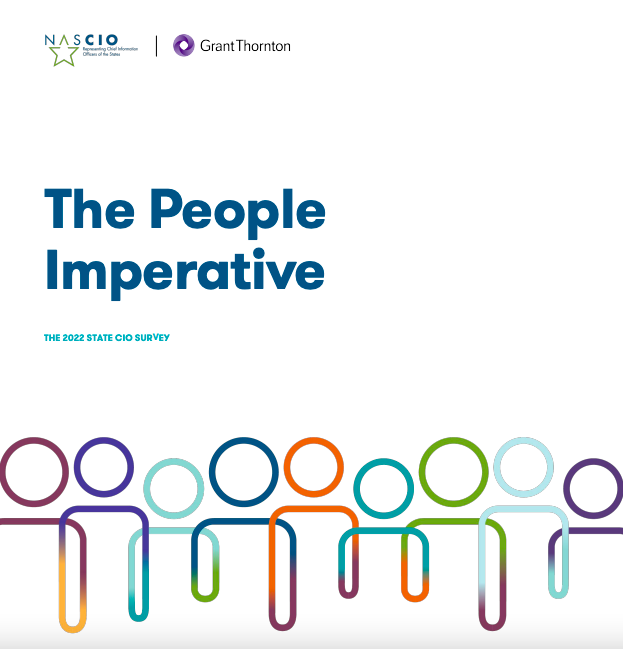The Watchword in State/Local Government Tech in 2023: People
Theme: Public and Critical Infrastructure

Author: Pete Peterson, Dean, Braun Family Dean’s Chair Senior Fellow, Davenport Institute for Public Engagement School of Public Policy, Pepperdine University
While much of the focus of discussions about the future of technology is on the ones and zeros of various software platforms, tech leaders in the public sector, especially at the state and municipal levels, are coming to a common conclusion: It’s really about people. A new iron triangle of trend lines — a retiring senior workforce (often dubbed “the silver tsunami”); the increasingly sophisticated needs of governments that are implementing a variety of new technology tools; and increasingly impatient citizens who expect more technologically proficient governments — is creating a historic human resource need in American public service for tech-savvy employees.
During its annual conference in October, the National Association of Chief Information Officers (NASCIO) released a nationwide study of public sector technology officials, fittingly titled “The People Imperative.” As the report states, “A major topic that permeated survey responses was the challenge of maintaining and growing a diverse and sustainable workforce.” This is one of the central reasons that only 7% of public sector officials surveyed by EY said that they had “achieved their digital transformation objectives” for their governments. Taking a global perspective on the issue, the EY report notes that the major challenge facing governments is that “they lack digitally aware leaders who can reimagine the citizen experience and create an inspiring vision for change.”
The challenges to hiring tech talent in the public sector go straight to the heart of broader modernization efforts across all government services, from procurement to public safety. As one state CIO offered in the NASCIO report, “Government has not yet reconciled itself to the job-hopping culture of today. Our hiring and retention practices are not based on rapid change. … This will take a complete rethinking of the recruiting, training and retention processes or we will simply be underperforming through constant churn.”
The pressure on governments to find tech-savvy professionals is forcing senior administrators to come up with different ways to attract this younger workforce, which can earn/command higher salaries in the private sector. In the NASCIO survey, 71% of CIOs said they are “building talent pipelines (e.g., partnering with local colleges/universities/technical schools)” — a rate that is more than double what many of these same respondents said in 2017 (29%) and much higher than in 2019 (44%).

This strategy of governments partnering with local universities is particularly important for the mission of PIT-UN. Academic programs in smart cities and government technology are one way to think about building talent pipelines. Another way is for municipal leaders to work directly with universities to solve localized technology challenges, and here again, PIT-UN members are playing pivotal roles. In this recent, encouraging profile in StateTech magazine, city governments from Pittsburgh to Santa Monica worked with PIT-UN members Carnegie Mellon University and Arizona State University to respond to local challenges ranging from removing graffiti to reducing double-parking.
As we’ve seen in the private sector, the use of technology to make government more effective and responsive is no longer solely the purview of IT department staff. From public transportation services using data analytics to better determine routes and schedules, to election administrators who have to consider cybersecurity threats, the public sector workforce of the near future will need to possess some level of tech expertise across almost every leadership position.

As for how we in PIT-UN can encourage more of our students to consider careers in public service, I’m reminded of a day trip organized by a friend of mine, a former NASA administrator, for a small group of us to tour NASA’s Jet Propulsion Laboratory (JPL) in Pasadena a few years ago. Toward the end of the visit, a member of our group asked the tour leader, “How do you retain your tech-savvy staff when competitors like Google and Facebook are vying for your talent?” Without hesitation, the JPL staffer responded, “If one of our team is considering a more lucrative offer from the private sector, I simply ask, ‘But are they working on sending a mission to explore Saturn?’ That usually keeps them.”
Of course, only a few public sector positions proffer this kind of opportunity. But in their own ways, every job in government, particularly at the local level, provides the opportunity for service to the community, and more and more, these positions will require the skills and perspectives we offer across the PIT University Network.

